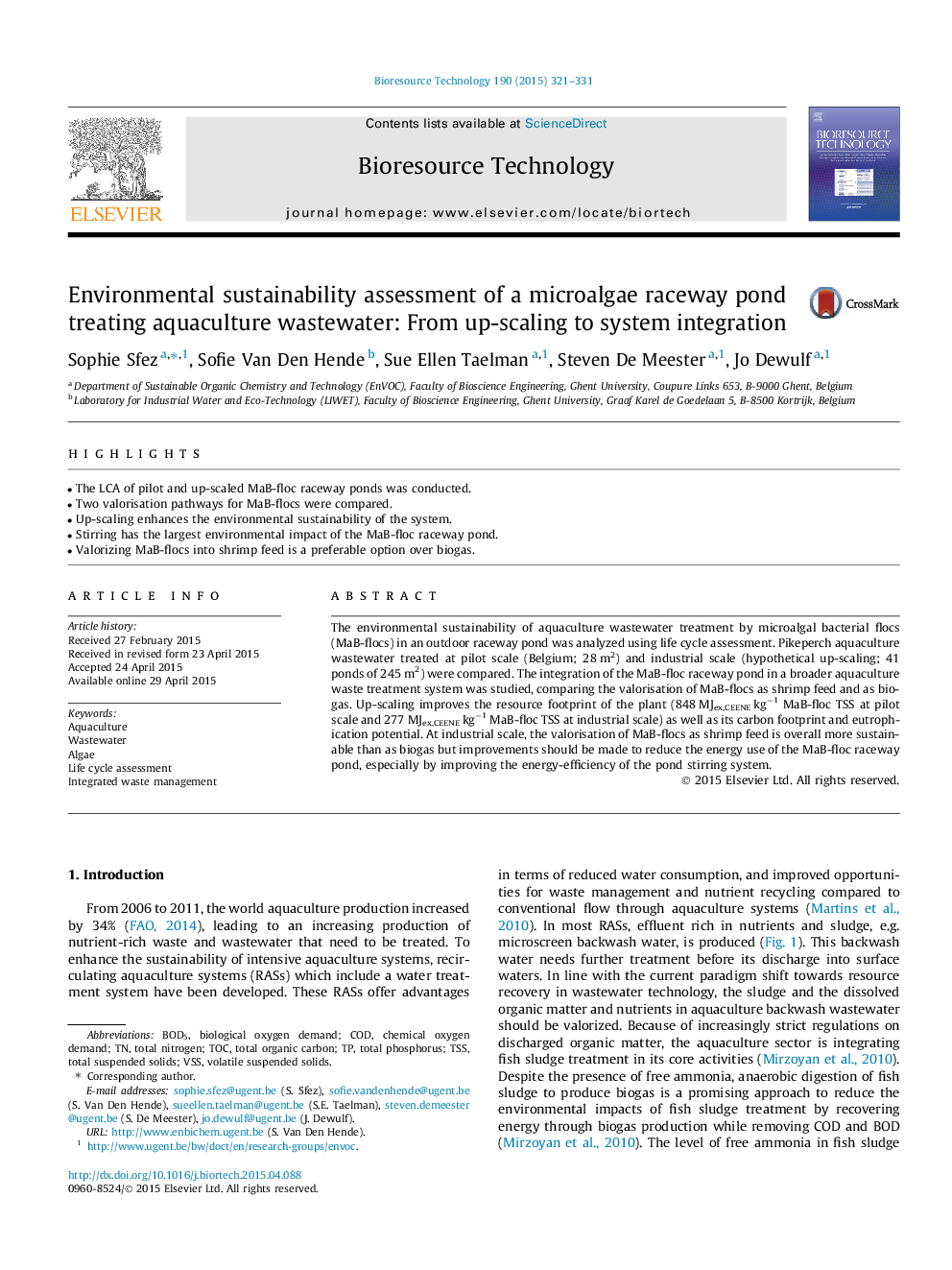| Article ID | Journal | Published Year | Pages | File Type |
|---|---|---|---|---|
| 679678 | Bioresource Technology | 2015 | 11 Pages |
Abstract
The environmental sustainability of aquaculture wastewater treatment by microalgal bacterial flocs (MaB-flocs) in an outdoor raceway pond was analyzed using life cycle assessment. Pikeperch aquaculture wastewater treated at pilot scale (Belgium; 28Â m2) and industrial scale (hypothetical up-scaling; 41 ponds of 245Â m2) were compared. The integration of the MaB-floc raceway pond in a broader aquaculture waste treatment system was studied, comparing the valorisation of MaB-flocs as shrimp feed and as biogas. Up-scaling improves the resource footprint of the plant (848Â MJex,CEENEÂ kgâ1 MaB-floc TSS at pilot scale and 277Â MJex,CEENEÂ kgâ1 MaB-floc TSS at industrial scale) as well as its carbon footprint and eutrophication potential. At industrial scale, the valorisation of MaB-flocs as shrimp feed is overall more sustainable than as biogas but improvements should be made to reduce the energy use of the MaB-floc raceway pond, especially by improving the energy-efficiency of the pond stirring system.
Keywords
Related Topics
Physical Sciences and Engineering
Chemical Engineering
Process Chemistry and Technology
Authors
Sophie Sfez, Sofie Van Den Hende, Sue Ellen Taelman, Steven De Meester, Jo Dewulf,
